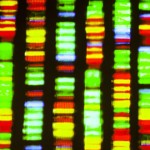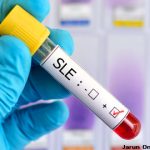NEW YORK (Reuters Health)—In patients with rheumatoid arthritis (RA) refractory to treatment with rituximab or tocilizumab, genetic profiling of synovial biopsies predicted the lack of therapeutic response better than a model using only tissue pathology or clinical factors, researchers say.1
“We believe this study is a paradigm shift in precision medicine in RA,” Dr. Costantino Pitzalis and Dr. Myles Lewis, both of Queen Mary University of London, U.K., tells Reuters Health by email. “We envisage that routine use of synovial biopsies could facilitate a patient-centered approach to the management of RA, thus moving away from the current trial-and-error drug prescribing towards an emergent era in which selection of the optimal drug is based on synovial biopsy gene signatures.
“The results will not directly change clinical practice immediately, as further development and additional clinical studies are needed to turn our results into a truly practical diagnostic test,” they say, “and more research is needed to identify new drugs that can treat resistant RA.”
“One of the surprises of the study was the identification of a synovial RNA-Seq gene signature associated with patients being refractory to the three most common classes of biologics (anti-TNF, anti-IL6 and anti-CD20),” they say. “[This] drug refractory signature was linked to the DKK3- positive subclass of fibroblasts identified by previous single-cell RNA-Seq studies [and] is likely to contain novel therapeutic targets to kickstart development of entirely new classes of drugs to help treat the most recalcitrant RA patients.”
As reported in Nature Medicine, the team’s original randomized trial tested the responses of 164 RA patients to either rituximab or tocilizumab. Patients with low or absent synovial B cell molecular signature had a lower response to rituximab (an anti-CD20 monoclonal antibody) compared with tocilizumab (an anti-IL6R monoclonal antibody).2
For the current study, the team conducted detailed histological/molecular analyses of the synovial biopsies from the original trial and identified humoral immune response gene signatures associated with response to rituximab and tocilizumab, and a stromal/fibroblast signature in patients refractory to both medications.1
Post-treatment changes in synovial gene expression and cell infiltration showed divergent effects of rituximab and tocilizumab relating to differing response/nonresponse mechanisms, whereas an analysis of patients refractory to both drugs yielded 1,277 genes unique to this group.
Building on these findings, the team developed machine learning algorithms predictive of response to rituximab (area under the curve, 0.74), tocilizumab (AUC: 0.68) and multidrug resistance (AUC: 0.69).


